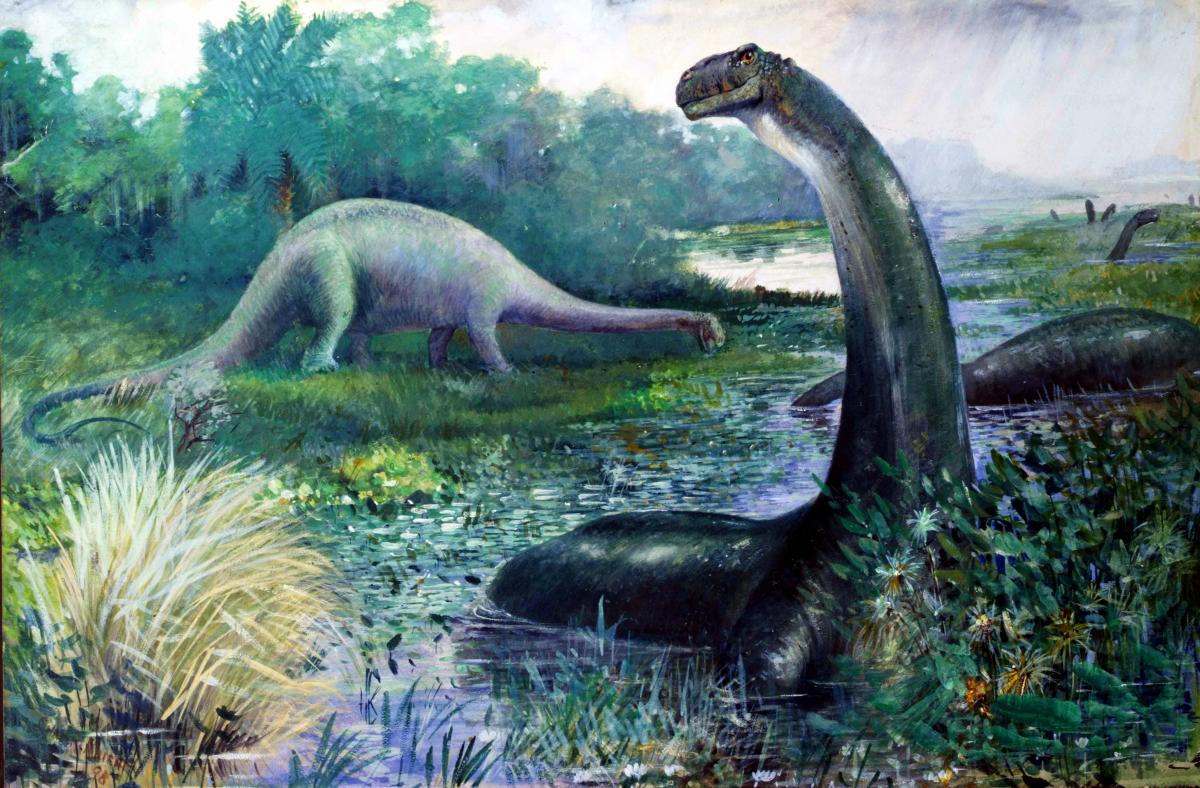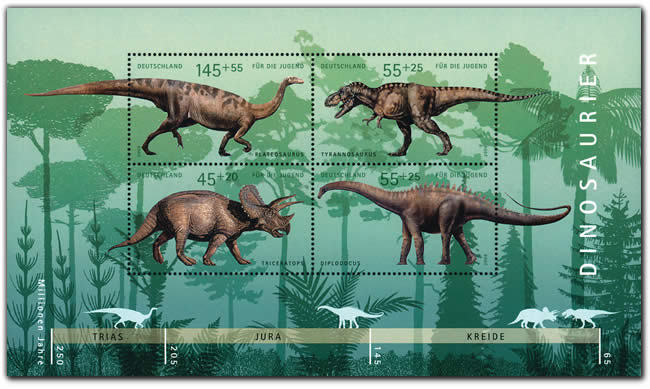For Christmas in 1996, my brother gave me a copy of Stephen Jay Gould’s Bully for  Brontosaurus. On the title page, he wrote, “Steph, Should you continue in Biology/Zoölogy —no matter where you are—you’ll run into Mr. Gould and his slightly pedantic but fantastic writing. This is, then, an introduction into college-level scientific writing, a harbinger of things to, come, and, hopefully, a good read. Happy ‘studying.’” At the time, my brother was a senior at Harvard and about to launch into a very successful career in comedy writing. I was a senior in high school and about to turn down Harvard for Wellesley (Go Wellesley!). Nevertheless, I did continue in biology, and boy, did I ever run into Mr. Gould. Imagine my absolute delight when, in 2002 as his faculty assistant, I got Steve to write an inscription to my brother in an identical edition of Bully for Brontosaurus along the lines of, “Michael, if you think this is pedantic, wait until you see my Structure of Evolutionary Theory.”
Brontosaurus. On the title page, he wrote, “Steph, Should you continue in Biology/Zoölogy —no matter where you are—you’ll run into Mr. Gould and his slightly pedantic but fantastic writing. This is, then, an introduction into college-level scientific writing, a harbinger of things to, come, and, hopefully, a good read. Happy ‘studying.’” At the time, my brother was a senior at Harvard and about to launch into a very successful career in comedy writing. I was a senior in high school and about to turn down Harvard for Wellesley (Go Wellesley!). Nevertheless, I did continue in biology, and boy, did I ever run into Mr. Gould. Imagine my absolute delight when, in 2002 as his faculty assistant, I got Steve to write an inscription to my brother in an identical edition of Bully for Brontosaurus along the lines of, “Michael, if you think this is pedantic, wait until you see my Structure of Evolutionary Theory.”
The look on my brother’s face when he opened his present? Priceless.
Naturally, when all the brouhaha erupted last week over the possible resurgence of the Brontosaurus genus, I knew two things: 1) I’d be writing a blog post about it, 2) I’d begin with that story about my brother’s long-ago Christmas gift. Step two now complete, let’s get on with the post.
“Bully for Brontosaurus,” the title essay in Gould’s 1991 collection of Natural History columns, provides all the background you need to understand what’s happening now. The basics are this: In the midst of a furious competition (the so-called “Bone Wars”) between O. C. Marsh and E. D. Cope to unearth and name as many dinosaurs in the American West as possible, a large sauropod was assigned to a new genus, Apatosaurus, in 1877 (Apatosaurus ajax, museum specimen YPM 1860). Two years later, an even larger sauropod was assigned to another new genus, Brontosaurus (Brontosaurus excelsus, museum specimen YPM 1980). In 1903, a paleontologist from the Field Museum in Chicago, Elmer Riggs, re-examined the two “holotype” (group-defining) specimens and decided that there really wasn’t sufficient evidence to assign them each to a separate genus. Following taxonomical convention, the first-named carried the day, so both specimens were put under the Apatosaurus umbrella. Brontosaurus excelsus became Apatosaurus excelsus, and technically, the genus Brontosaurus ceased to exist.
As Gould explained, the official renaming didn’t catch on for decades. Marsh’s 1879  “Brontosaurus” was a far more complete specimen than the 1877 Apatasaurus. As such, casts of YPM 1980 were installed into many museums around the world and were labeled Brontosaurus even after Riggs made that name obsolete. After all, “thunder lizard” is a tremendously catchy name, far more so than “deceptive lizard.” So, many of us grew up with books and movies talking about Brontosaurus, not really caring at all that it didn’t officially exist as a genus. That changed in 1989, when the US Post Office issued a set of four dinosaur stamps (launched at Disney World as a tie-in with the release of The Land Before Time on videocassette)—Tyrannosaurus, Stegosaurus, Pteranodon, and Brontosaurus.
“Brontosaurus” was a far more complete specimen than the 1877 Apatasaurus. As such, casts of YPM 1980 were installed into many museums around the world and were labeled Brontosaurus even after Riggs made that name obsolete. After all, “thunder lizard” is a tremendously catchy name, far more so than “deceptive lizard.” So, many of us grew up with books and movies talking about Brontosaurus, not really caring at all that it didn’t officially exist as a genus. That changed in 1989, when the US Post Office issued a set of four dinosaur stamps (launched at Disney World as a tie-in with the release of The Land Before Time on videocassette)—Tyrannosaurus, Stegosaurus, Pteranodon, and Brontosaurus.
I’m going to pause here—and I’m sure all of my friends and colleagues know why—to emphasize that pterosaurs are not dinosaurs. Dinosaurs did not fly, or swim in the ocean for that matter. Calling a pterosaur a dinosaur would be like calling an elephant a type of kangaroo. It’s super wrong. Not a little wrong. A lot wrong. And yet, the big controversy over these stamps had nothing to do with the inclusion of Pteranodon in the set of “dinosaur” stamps. Rather, it was about how the Brontosaurus stamp should have been labeled “Apatosaurus” instead—a rough equivalent of calling Istanbul Constantinople (spoiler alert: they are the same thing). My, how we can miss the forest for the trees sometimes.
 Anyway, when the post office released these stamps, the “nonexistence” of the Brontosaurus genus came out and suddenly, everyone was talking about it. The controversy even reached the pages of The New York Times, which reported that the Paleontological Society and the Smithsonian Institution were protesting the stamps, the Smithsonian denouncing the postal service’s preference of “cartoon nomenclature to scientific nomenclature.” (The headline of the article is “Use of Extinct Name Rattles Dinosaur Lobby.” There’s a dinosaur lobby? How do I join?)
Anyway, when the post office released these stamps, the “nonexistence” of the Brontosaurus genus came out and suddenly, everyone was talking about it. The controversy even reached the pages of The New York Times, which reported that the Paleontological Society and the Smithsonian Institution were protesting the stamps, the Smithsonian denouncing the postal service’s preference of “cartoon nomenclature to scientific nomenclature.” (The headline of the article is “Use of Extinct Name Rattles Dinosaur Lobby.” There’s a dinosaur lobby? How do I join?)
In his “Bully for Brontosaurus” essay, Gould evaluated the significance of the controversy this way: “I regret to report, and shall now document, that the issue could hardly be more trivial—for the dispute is only about names, not about things.” The more it changes, the samer it gets—because his summary would apply equally well today, now that Brontosaurus is back in the news. I’ll explain in part 2.
Are you a teacher and want to tell us about an amazing free resource? Do you have an idea for a future Misconception Monday or other post? See some good or bad examples of science communication lately? Drop me an email or shoot me a tweet <at>keeps3.

